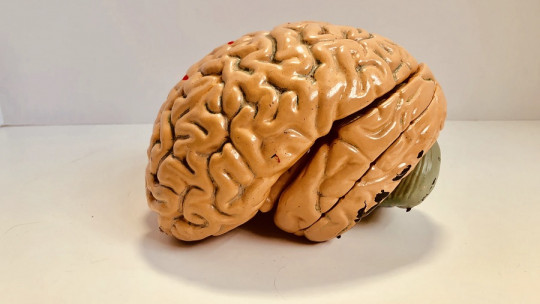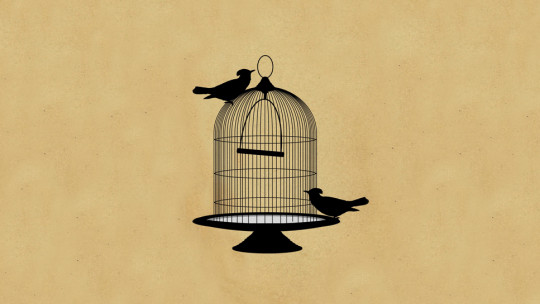We have all experienced some situation in which we have put ourselves in the worst case, that we have seen everything black and white or we have drawn hasty conclusions, only to have the situation resolved without any of the problems we imagined.
These thoughts, far from helping us, cause us discomfort in anticipation of what may happen later. That is why they are called dysfunctional thoughts, because instead of allowing us to adapt to the situation, they cause us the opposite.
Dysfunctional thoughts are the subject of cognitive or cognitive-behavioral therapy , since they can lead to more complex problems, such as anxiety or depression. Therefore, in this article we explain how to identify and manage dysfunctional thoughts, and thus prevent them from having more serious consequences.
What are dysfunctional thoughts?
In order to identify dysfunctional thoughts, the first thing we need is to define them. We call dysfunctional thoughts those that cause us discomfort, being irrational and automatic, that is, they appear without us being able to control them. They are also called automatic or negative automatic thoughts (PANs).
The problem is that we tend to believe that these thoughts are true, that they represent reality, and we can even be stubborn if they try to convince us otherwise. These thoughts are not based on logic, so most of the time they are wrong, they distance us from reality and cause us unnecessary and unreal suffering.
They are a consequence of the so-called cognitive distortions: wrong ways of processing information about the situation , causing our interpretation of the situation to be altered, distorted. Dysfunctional thoughts would be the unpleasant thoughts we have after misinterpreting the situation.
Cognitive distortions
We do not have cognitive distortions because we do, but rather they are learned as a result of our own experiences and the conclusions we have drawn from them. In the cognitive psychological model there is a theoretical classification of the most important cognitive distortions.
An example is overgeneralization: extrapolating a conclusion to all situations, even if they are not similar. They also highlight dichotomous or absolute thinking , which is the vision of black or white, all or nothing, without being able to see the intermediate points; or mind reading, in which we assume that we know what other people are thinking, when it is impossible to know for sure.
Other frequent distortions are catastrophism, which involves putting yourself in the worst-case scenario; negative predictions, which lead us to believe that something bad is going to happen, without having real evidence of it; filtering, which involves magnifying the negative aspects of the situation and minimizing the positive aspects; and personalization, which occurs when we take the situation personally, believing that we are responsible for it or that the situation has to do with us even if it is not.
How are they related to other psychological problems?
We can all have dysfunctional thoughts at specific times, especially when we have had a bad day or are faced with a situation that worries us. The problem is when they appear frequently, and begin to skew our vision of reality.
For example, repeated dysfunctional thoughts caused by cognitive distortions focused on the future, especially negative predictions, can cause us a lot of anxiety or lead to a disorder of this type. Another anxiety disorder that is based on cognitive distortions is OCD, in which we view situations through personalization and catastrophizing, and believe that it is our responsibility to avoid unpleasant events.
But The main disorder for which the cognitive model of distortions was developed is depression. People with this disorder have a large number of dysfunctional thoughts, having distorted our image of the world, of ourselves and of the future. Different distortions are combined, such as those present in anxiety disorders and some others mentioned.
How can I manage dysfunctional thoughts?
Being automatic, we cannot control the appearance of dysfunctional thoughts, but we can learn to interpret situations in other alternative ways and make these thoughts smaller. This requires effort, time and perseverance, since it is difficult to make them disappear the first time and you need to try repeatedly. We leave you some steps that can help you.
1. Identify dysfunctional thoughts
The first thing is to realize that our thinking is dysfunctional. To do this, we can take into account the definition described previously, and be attentive to whether they cause us discomfort and whether they seem rational to us if we observe them from a certain distance. It can help us to write down our thoughts, things look different on paper.
2. Recognize the cognitive distortion behind thinking
Once we identify the dysfunctional thinking, ask yourself what cognitive distortion has altered our processing of the situation. You can look at the ones we have mentioned or those you find in psychology manuals. When you know what it is, you can realize what your mistake is and how you have exaggerated the probabilities or negative consequences of the situation.
3. Broaden the range of interpretations
It is important that you keep in mind that your dysfunctional thinking is one conclusion among many other possible ones, drawn from one form of interpretation, also among many others. Besides, Being dysfunctional, it lacks logic and evidence connected to reality, so other conclusions that you have not drawn a priori are more likely.
Therefore, once the dysfunctional thought has automatically come to you, remember to look for other more probable and logical alternatives, and focus on them more than on the dysfunctional one.
4. Ask yourself these questions to help you deny it
What is the evidence that your thought is the truth of what is going to happen or has happened? And if there is evidence, is it possible that it is also a distorted processing of reality? What good is the thought you are having, does it work for you to deal with the situation? Is there an alternative view of the facts? What interpretation would another person make in the same situation? Which of the interpretations do you think reflects reality to a greater extent?
5. Direct your attention away from thinking
Dysfunctional thoughts are like a child having a tantrum: if you pay attention to him when he is having a tantrum, he will repeat it more times. It is important not to fight the thought : accept that it has appeared, that it is natural that it happens sometimes, but that it is not an absolute truth.
Once we are aware of it and you have accepted the thought, try to focus on something else or thought. You can do activities that require you to pay attention to do them, or that generally allow you to disconnect. Take the opportunity to do pleasant activities that help you get out of your head and focus on the present.









